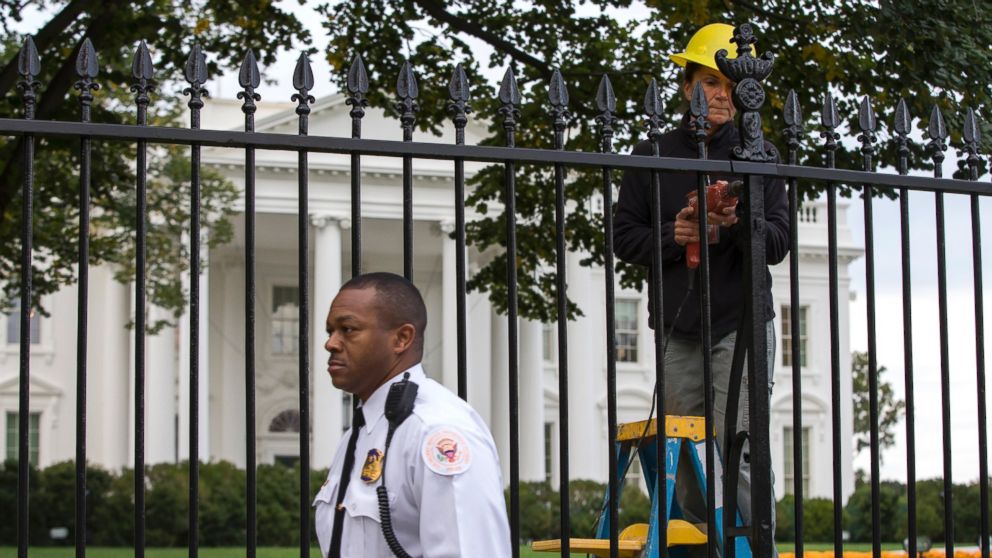5 Sweeping Changes Recommended for Secret Service After Fence Jumper Enters WH
A mistake a “could have disastrous consequences for the nation and the world."

— -- A bipartisan, independent panel scrutinizing the U.S. Secret Service after a man with a small knife in his pocket jumped the perimeter fence and made it deep inside the White House is recommending sweeping changes at the agency.
The Secret Service's “paramount mission” of protecting the president and other high-ranking officials “allows no tolerance for error,” and a “single miscue, or even a split-second delay, could have disastrous consequences for the nation and the world,” warns the panel's final report, commissioned by DHS Secretary Jeh Johnson after the September breach.
After speaking with 50 officials from the Secret Service and as many as 70 others from other federal agencies, state agencies, and the White House, the panel's report makes these “important” recommendations:
1. A TALLER, “BETTER” FENCE
A better fence can provide agents with “crucial” time needed to identify a threat and determine how to respond appropriately, the report concludes. “Every additional second of response time” counts, and those seconds would help agents “decide, in a split-second, whether to use lethal force on a person who may not actually pose a viable threat to the president or the White House.” The report says that “for sure, the fence must be taller.” In addition, horizontal bars on the fence that can be used like a ladder “should be eliminated,” and the top of the fence could be curved outward “to make scaling it much more difficult for most,” the report recommends. “Importantly, designers of the new fence must balance security concerns with the long and storied tradition of the White House being the ‘People’s House,’” the report says. The acting head of the Secret Service, Joe Clancy, said recently that changes to the fence, which currently stands at 7.5 feet, are already under serious consideration.
2. A “STRONG” LEADER FROM OUTSIDE
“The Panel found an organization starved for leadership that rewards innovation and excellence and demands accountability. From agents to officers to supervisors, we heard a common desire: More resources would help, but what we really need is leadership.” Consequently, the report concludes that “the right person” to become the next Secret Service director “should come from outside the Service.” The report says any benefits from appointing someone with “Service experience” are “outweighed” by the need for “dynamic leadership” that can “move the Service forward into a new era,” “drive change in the organization,” and “make difficult choices.” “Only a director from outside the Service, removed from organizational traditions and personal relationships, will be able to do the honest top-to-bottom reassessment this will require,” the report concludes.
3. A NEW BUDGET
“[N]o one has really looked at how much the mission, done right, actually costs.” So, the report says, a new director should “start with a zero-based budget,” determine what “is needed” to accomplish the Service’s mission, and then ask the White House and Congress for “this sum.” In the meantime, “to ensure adequate training and personnel for the White House,” the administration and Congress should find a way to let the Secret Service hire 85 more special agents and 200 more Uniformed Division officers, the report says.
4. MORE TALENT AND MORE AGENTS
“The Secret Service is stretched to and, in many cases, beyond its limits,” with those protecting the White House working “an unsustainable number of hours,” the report says. So the service needs to “increase significantly in size” by hiring more agents and uniformed officers, the report concludes. In addition, the service needs to recruit “more of the best and most innovative scientists and engineers dreaming up ways to defeat the next threat,” according to the report. All that means the Secret Service needs “an administrative department that can demonstrate with rigorous precision why additional resources are necessary and knows how to budget for it,” the report says.
5. MORE ACCOUNTABILITY
“The agency’s zero-failure mission requires that its high standards be met,” so agents and officers themselves “must see that the organization itself believes in its standards and enforces them in a consistent, evenhanded manner,” according to the report. “It’s not just about morale or fairness, but about creating a “culture of performance that the Secret Service needs to meet its zero-failure mission,” the report states.
After the recommendations were released, Secretary Johnson called them "astute, thorough, and fair," saying, "Fundamental change is needed at the Secret Service." And the head of the House Judiciary Committee, Rep. Bob Goodlatte, R-Virginia, said it's “imperative that the Secret Service begin to review and implement the recommendations ... as soon as possible."
The four panelists – former top Justice Department officials Thomas Perelli and Mark Filip, and former White House officials Joseph Hagin and Danielle Gray – were directed to take a broad look at how to revamp an agency scarred by recent scandals. Two of the panelists served under the Obama administration, the other two served under the Bush administration.
A separate internal DHS probe, led by Deputy Secretary Alejandro Mayorkas, detailed the multiple failings and missed opportunities that led to the Sept. 19 incursion allegedly carried out by 42-year-old Omar Gonzalez. The results of that probe were released last month.




